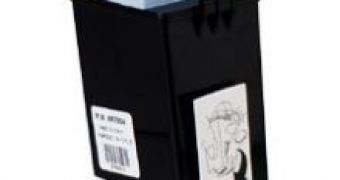Have you ever heard of bio-ink? The term itself sounds interesting, but what lies behind it is even more appealing. A research team in Pittsburg has developed a jet system that can print bio-ink patterns able to host stem cells. The stem-cells based bio ink comes from mice and can differentiate into both muscle cells and bone cells. The technology (if it will become wide available) can translate into a breakthrough in the tissue growing domain. Anything from wear and tear associated with old joints, accidental trauma and bones cracking, and even joint deterioration due to autoimmune disorders could be treated using this idea.
"Previously, researchers have been limited to directing stem cells to differentiate toward multiple lineages in separate culture vessels. This is not how the body works: the body is one vessel in which multiple tissues are patterned and formed. The ink-jet printing technology allows us to precisely engineer multiple unique microenvironments by patterning bio-inks that could promote differentiation towards multiple lineages simultaneously," explained Phil Campbell, research professor at Carnegie Mellon's Institute for Complex Engineered Systems.
"Controlling what types of cells differentiate from stem cells and gaining spatial control of stem cell differentiation are important capabilities if researchers are to engineer replacement tissues that might be used in treating disease, trauma or genetic abnormalities," continued. Lee Weiss, research professor at Carnegie Mellon's Robotics Institute.
The custom-built ink-jet printer, developed at Carnegie Mellon's Robotics Institute, can deposit and sustain growth factors in virtually any design, pattern or concentration. These slides of extra-cellular design can then be placed in culture dishes and injected with muscle-derived stem cells (MDSCs). Based on a pattern that has been previously printed, the MDSCs can be directed to differentiate and grow into muscle cells or bone cells.

 14 DAY TRIAL //
14 DAY TRIAL //